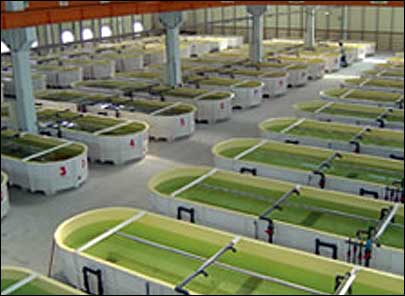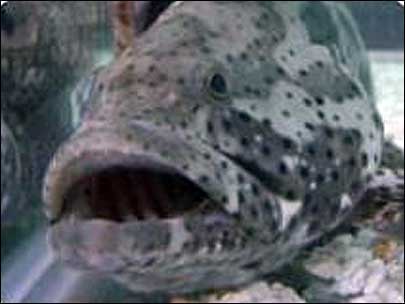Tekho, a Taiwanese grower and supplier of grouper, is tagging its fish with RFID tags at its An Pin Live Fish Center in the city of Tainan, in southern Taiwan, to make each fish’s life and health history available to consumers.
When restaurant patrons order grouper in Taiwan, they can expect to pay upwards of $100. The choice of which fish will be the best tasting and healthiest is up to the customers as they pick from a restaurant’s tank of live specimens. For that reason, discerning diners look for grouper of a particular size and age, that has been fed specific foods to ensure it will provide a good meal. The fish’s health is not always guaranteed, however, since the animals come from a variety of farmers at various locations with little recorded history.
Until now, customers have had to rely on a fish’s appearance, as well as any manually recorded information about its origins, age, weight and health. But customers are often suspicious of the animal’s health when there is little traceability as to its origins.
With Tekho’s Ubiquitous Live Fish Traceability program, using RFID technology integrated by Microsoft’s BizTalk RFID division, restaurants can now scan data linked to an RFID tag attached to a fish’s gill and mouth to inform customers of its age, where it was farmed and what it was fed, as well as the quality of water in which it swam.
Tekho raises and sells about 27,000 fish annually for restaurant consumption, according to the company’s CEO, Michael Wu. Its highly prized grouper are housed at the An Pin Live Fish Center, then sent live to high-end restaurants throughout the country. With a full traceability system, he explains, the fish have greater value to customers.
Wu says the company sought an RFID system that would provide customers with knowledge about the fish they were eating. In addition, he notes, RFID could save time and labor that would otherwise be used in manually recording details about the grouper as they are raised and then shipped.The RFID solution takes the complexity out of tracking the fish, says Anush Kumar, senior product manager for Microsoft’s BizTalk RFID division, which provides the software allowing RFID reads to be gathered, stored and shared with restaurants. To alleviate the cost of the system, Tekho is charging about 10 percent more to restaurants for the added data they have about a particular fish.
About one year ago, Microsoft BizTalk began building the RFID component of Tekho’s Ubiquitous Live Fish Traceability system. According to Kumar, Tekho was already using BizTalk for business analytics, with workers manually inputting temperature data and other details about the water in which fish were located, as well as information about the type of food the fish were fed. All of this data was saved in Tekho’s server, hosted by BizTalk. When a government certifier inspects a fish during its life at the farm, Kumar says, that information is also stored in the server.
Whenever a restaurant places an order, workers at the An Pin Live Fish Center remove grouper from a tank and attach passive 13.56 MHz tags to each fish’s gills by means of a wire extending to the mouth, making the tagging more tamper-resistant. Supplied by the Asia Smart Tag Co., the tags comply with the ISO 15693 standard and are encased in plastic to make them waterproof and durable.
Employees scan the tag’s unique ID number with a U-grid Technology handheld RFID interrogator, built into a PDA made by Macrotec Electronics. That number, as well as the time of the shipment and the fish’s weight, is then linked to details already stored in the back-end system.
When a diner at a participating restaurant selects a fish, employees use the same model of handheld reader to capture that grouper’s tag ID number and access its historical data, stored in the BizTalk server. The workers then provide a printout for the patron to study before deciding whether the fish is acceptable. If the customer approves the grouper, its RFID tag is removed and sent back to Tekho for reuse.
Wu says he expects to see a return on the company’s investment, but has not yet done so. “I predict one more year for a full ROI, because of the initial investment and all the tags are returned back to us,” he says, adding, “I’ve been very excited and happy about [the system].”



